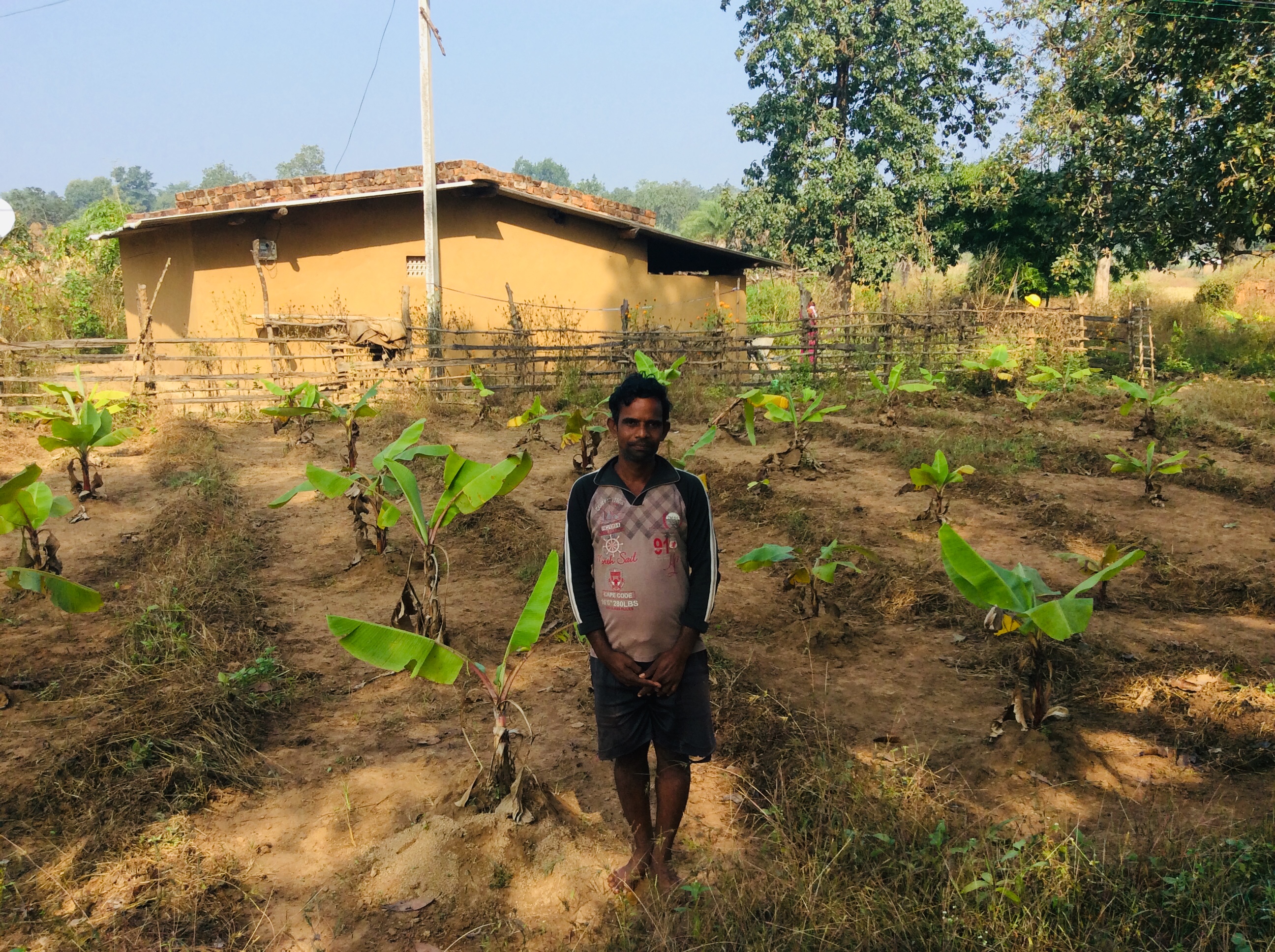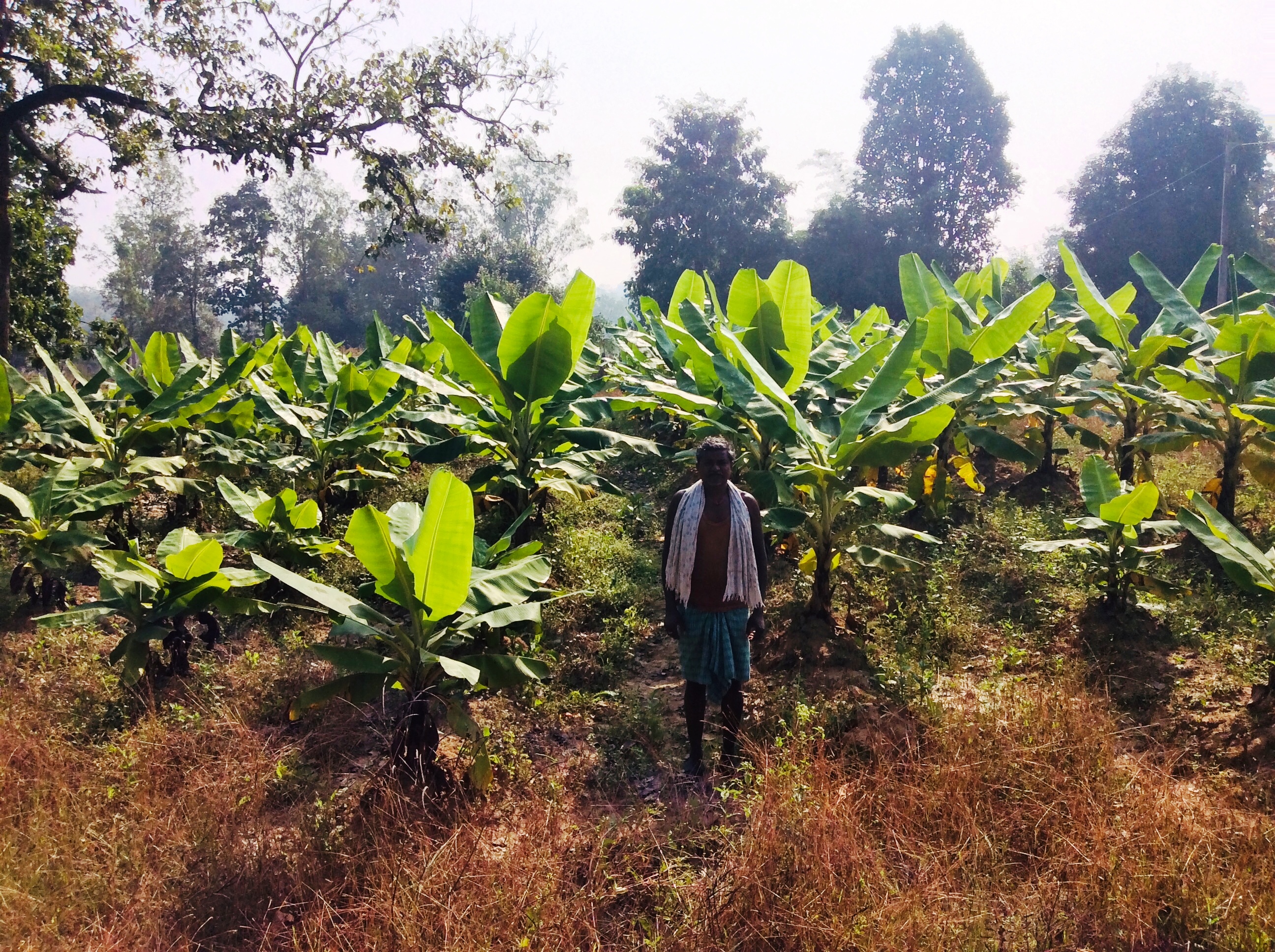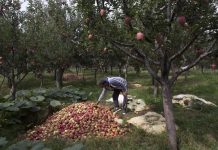
Encouraged by the forest department and an NGO, a few farmers have successfully experimented with horticultural crops in Dantewada district of Chhattisgarh, writes Deepanwita Gita Niyogi
In June last year, Shankar Yadav planted 1,000 banana saplings on two acres of land aided by drip irrigation. This small-scale farmer, a resident of Nagphani village in Dantewada district of Chhattisgarh, expects the fruits to come in another month or so. Nagphani, which was previously a forest village and now a revenue one, has 40 households. Most farmers here cultivate paddy during the Kharif season.
To help farmers earn more, the forest department urged them to grow bananas as well as mangoes on FRA (Forest Rights Act, 2006) clusters. Inspired by Yadav, three other farmers also turned to bananas in the village.
“I used to cultivate only paddy but the profits weren’t much. The forest department distributed saplings last monsoon and urged all of us to grow bananas,” Yadav said, who is looking forward to selling his fruits at the nearby market. Besides bananas, he has also planted 40 mango saplings which will take minimum three years to bear fruits.
In Nagphani, bananas occupy plots ranging from one to five acres. Yadav hopes more farmers will turn to horticulture in future in the village. Compared to paddy, there is less labour required for bananas. However, paddy cannot be totally given up as the grain is associated with major festivals in Chhattisgarh and has strong cultural associations.
Going beyond paddy
Parvendra Rai, who is from the forest department and acts as the beat guard of Nagphani village, said the growth and fruition of bananas depend on the soil condition. If these farmers get a good harvest, they would expand the area under banana for more earnings in the next season. Some would also go in for medicinal plants like shatavari and ashwagandha.
Charan Singh Pujari, an Adivasi farmer, is looking forward to a good harvest from 400 plants. It takes about 10 months for banana plants to bear fruits. Pujari said the soil has to be piled up around the base of the plants. It aids in growth, helps to check weeds and conserves soil moisture. Another farmer, Dinesh Tamo, has grown 500 plants in an acre. He has also experimented with turmeric.
Work on horticulture in Nagphani started much later. Chandenar village in Dantewada, some 40 km from Nagphani, showed the way. The initiative in Chandenar, a small village situated on a hillock, was also supported by local non-profit Vanya.

Nagphani and Chandenar were at one time forest villages where many people received land rights under the Forest Rights Act, 2006. “We want farmers in such villages to grow fruit trees and not just paddy. Along with the department, Vanya also distributed saplings of mangoes and lemons in Chandenar,” said Jaynarayan Bastariya of Vanya, which works in the field of environment.
Apart from bananas and lemons, farmers were also encouraged to grow bamboo, litchi, jackfruit and sapodilla in Chandenar. About 60 farmers are also into vegetable cultivation in this village.
Vanya started working in Chandenar in 1998-99 along with the forest department. “It is a positive initiative. At present, three farmers are cultivating bananas on three acres of land. On our part, we talked to them and made them ready for horticulture,” Bastariya added.
Why horticulture?
There has been an increased effort to prevent farmers from clearing forests for cultivation in both the villages and ensure that vegetation is maintained. “That is why they were encouraged to plant fruits trees. Chandenar farmers are now successfully growing the dasheri variety of mango,” Bastariya said.
In both the villages, the forest department started the initiative. Another village, Purantarai, also has some banana plants. Some more farmers are getting interested and would receive banana saplings during this year’s monsoon.
India ranks first in banana production and third in area under fruit crops, according to the National Horticulture Board. The banana plant has many uses and almost all its parts like the flower and the stem are consumed for their nutritional values apart from the fruit.
Dantewada divisional forest officer Sundeep Balaga said cultivating bananas ensures fast revenue generation for small-scale farmers. Once the fruits are ready, income ranging from Rs 30,000-40,000 per acre is expected. The saplings were grown in the nursery and three varieties, Amritpani, Poovan and Busawal, were distributed among the farmers.
All the three varieties are indigenous ones and unlike hybrid varieties, they need less maintenance. Their susceptibility to diseases is also low.
Yadav is happy with the diversification experiment but admits that he has much to do outdoors these days. Still, bananas are suitable for the entire Bastar sub-division of which Dantewada is a part.
Banana 1: At present, four farmers are growing bananas in Nagphani village.
Banana 2: India ranks first in banana production and third in area under fruit crops, according to the National Horticulture Board.
Banana 3: All the three varieties of bananas grown by Nagphani farmers are indigenous ones and unlike hybrid varieties need less maintenance.
Banana 4: The growth and fruition of bananas depend on the soil condition to a great extent.













